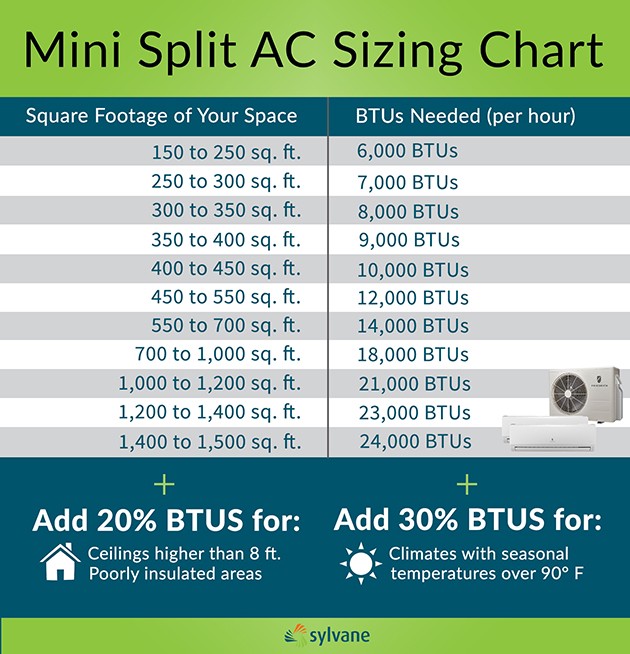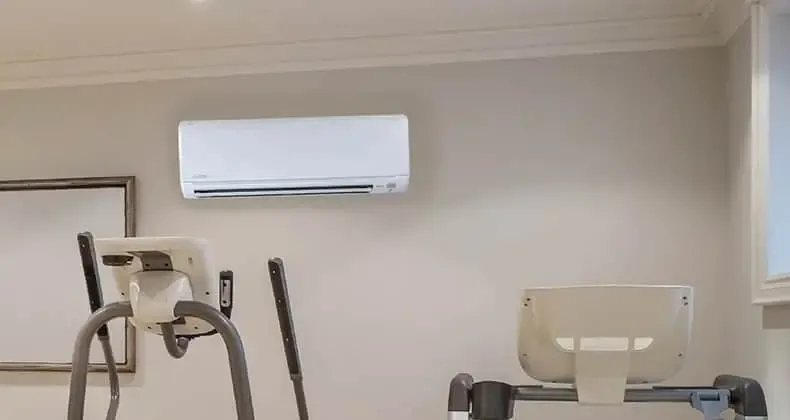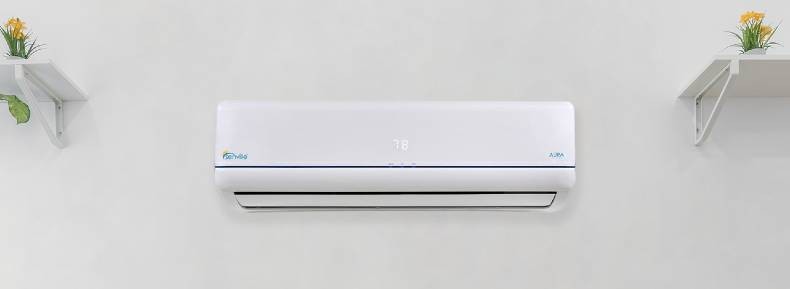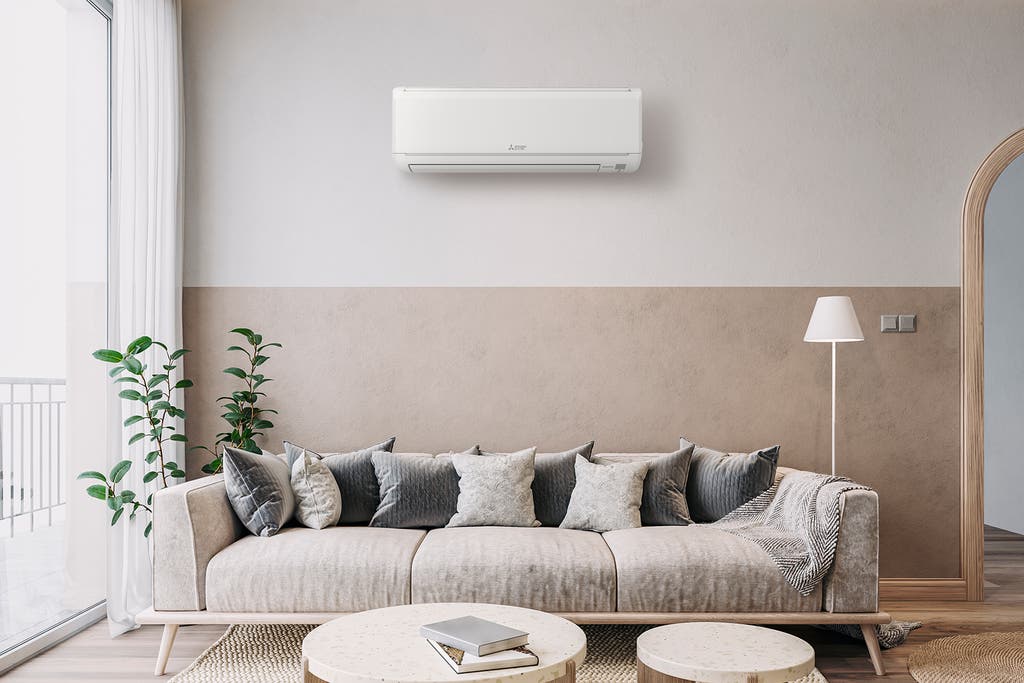When it comes to creating a comfortable and conducive working environment in a commercial space, the right air conditioning system plays a crucial role. And if you’re considering a mini split AC, there are a few key features you should keep in mind. In this article, we’ll explore these important factors to consider when purchasing a mini split AC for your commercial space. From cooling capacity to energy efficiency, we’ll help you make an informed decision and ensure a pleasant working atmosphere for your employees and clients alike.
Cooling Capacity
BTU
The cooling capacity of a mini split AC is measured in British Thermal Units (BTUs). BTUs are used to determine the amount of heat that an air conditioner can remove from a space in one hour. The higher the BTU rating, the more cooling capacity the unit has. When choosing a mini split AC for a commercial space, it’s essential to consider the cooling requirements of the area. A larger space will require a higher BTU rating to ensure efficient and effective cooling.
Tonnage
Tonnage is another measure of cooling capacity and is commonly used in the HVAC industry. One ton of cooling capacity is equal to 12,000 BTUs per hour. Mini split ACs are available in different tonnage options, ranging from 0.5 tons to multiple tons. The tonnage required for a commercial space depends on various factors, including the size of the area, the number of occupants, and the heat-generating equipment present. It is crucial to choose the right tonnage to ensure optimal cooling performance.
Energy Efficiency
SEER Rating
The Seasonal Energy Efficiency Ratio (SEER) rating indicates the energy efficiency of an air conditioner. It measures the cooling output (in BTUs) divided by the energy input (in watt-hours) over an entire cooling season. A higher SEER rating means a more energy-efficient unit. When selecting a mini split AC for a commercial space, it is advisable to choose a unit with a higher SEER rating to save energy and lower operating costs in the long run.
EER Rating
The Energy Efficiency Ratio (EER) rating is similar to the SEER rating but focuses on the cooling output (in BTUs) divided by the energy input (in watt-hours) at a specific temperature. It provides a snapshot of the unit’s energy efficiency at a given moment. A higher EER rating indicates a more energy-efficient operation, especially at higher temperatures. It is important to consider both the SEER and EER ratings when evaluating the energy efficiency of a mini split AC.

Air Quality
Filtration System
The air quality in a commercial space is of utmost importance, and a mini split AC with an efficient filtration system can greatly improve it. Look for units that incorporate high-quality filters that can capture airborne particles such as dust, pollen, and mold spores. Some mini split ACs even feature advanced filtration technologies like HEPA filters or electrostatic filters, which can provide superior air purification. An efficient filtration system helps maintain a clean and healthy indoor environment.
Dehumidification
In addition to cooling, many mini split ACs offer dehumidification capabilities. Excessive humidity can lead to discomfort, mold growth, and other air quality issues. Look for mini split ACs that have a built-in dehumidification mode or a separate dehumidification function. These units have the ability to remove excess moisture from the air, creating a more comfortable and healthier space for occupants.
Installation Requirements
Indoor Unit Placement
The indoor unit of a mini split AC should be strategically placed to ensure optimal cooling and airflow. It is important to choose a location that allows for even distribution of conditioned air throughout the entire commercial space. Factors to consider when determining the indoor unit placement include the layout of the area, the presence of obstacles such as furniture or partitions, and the desired airflow pattern. Proper indoor unit placement is crucial for maximizing the cooling efficiency and comfort of the space.
Outdoor Unit Placement
The outdoor unit of a mini split AC is responsible for dissipating the heat absorbed from the indoor space. It should be installed in a well-ventilated area that allows for efficient heat transfer and proper airflow. The location should be away from direct sunlight, debris, and obstructions that could hinder the unit’s performance. It is also important to consider noise levels when selecting an outdoor unit placement, especially in commercial spaces where excessive noise may disrupt daily operations.
Piping and Wiring
Installation of a mini split AC requires proper piping and wiring connections between the indoor and outdoor units. The length and quality of piping, as well as the wiring layout, can affect the overall performance of the system. It is essential to follow the manufacturer’s guidelines and specifications to ensure proper installation. Hiring a professional HVAC technician experienced in mini split AC installations is highly recommended to ensure a seamless and efficient setup.

Noise Level
Decibel Rating
The noise level of a mini split AC is an important consideration, especially in commercial spaces where silence is crucial for productivity or customer satisfaction. The noise level is typically measured in decibels (dB). Lower dB ratings indicate quieter operation. When selecting a mini split AC, look for units with low noise levels, especially for indoor units located in close proximity to occupants. Choose a unit with a decibel rating that aligns with the noise requirements of the commercial space.
Sound-dampening Features
Some mini split ACs are equipped with sound-dampening features that help reduce operational noise. These features may include insulated compressor compartments, vibration-dampening technology, or specially designed fan blades. If noise levels are a concern in your commercial space, consider investing in a mini split AC that offers these sound-dampening features for a quieter and more comfortable environment.
Control Options
Remote Control
Most mini split ACs come with a handheld remote control that allows you to conveniently adjust the settings from a distance. Look for a remote control with user-friendly features such as a backlit display, intuitive buttons, and programmable timers. The remote control should provide easy access to essential functions such as temperature adjustments, fan speed control, mode selection, and more. Make sure the remote control is included with the mini split AC and that it offers the level of control and convenience you desire.
Smart Home Integration
Many modern mini split ACs are compatible with smart home integration, allowing you to control the unit using your smartphone or other smart devices. Look for mini split ACs that support popular smart home platforms such as Amazon Alexa or Google Assistant. With smart home integration, you can control and monitor your mini split AC remotely, set up customized schedules, and even adjust settings using voice commands. Smart home integration provides enhanced convenience and control over your cooling system.

Maintenance and Serviceability
Filter Cleaning
Regular filter cleaning is essential for maintaining the optimal performance and longevity of a mini split AC. Some units have easily accessible filters that can be cleaned or replaced by the user, while others may require professional servicing. Check the manufacturer’s instructions regarding filter cleaning and maintenance to ensure you can effectively maintain the unit’s air quality and cooling efficiency.
Access to Components
When considering a mini split AC for a commercial space, it is important to evaluate the ease of access to the unit’s components for maintenance and serviceability. Look for units that provide easy access to important components such as the compressor, fan, and electrical connections. Units with removable panels or access doors make it easier for technicians to perform routine maintenance or repairs, reducing downtime and service costs.
Warranty and Support
Manufacturer Warranty
A comprehensive manufacturer warranty is an essential consideration when purchasing a mini split AC. Look for units that offer a substantial warranty period, typically ranging from 3 to 10 years. The warranty should cover both parts and labor, giving you peace of mind that any potential defects or issues will be addressed by the manufacturer. Be sure to read the warranty terms and conditions to understand the coverage and any specific requirements for warranty claims.
Local Service Providers
Having access to reliable local service providers is crucial for the installation, maintenance, and repair of a mini split AC. Before purchasing a unit, research the availability of HVAC technicians or contractors in your area who are experienced in mini split AC systems. Having local support ensures prompt and efficient service when needed, minimizing downtime and maximizing the lifespan of your mini split AC.

Cost
Initial Investment
The cost of a mini split AC for a commercial space varies depending on factors such as BTU capacity, tonnage, energy efficiency ratings, and additional features. Higher BTU ratings and tonnage, as well as higher SEER or EER ratings, tend to increase the initial cost of the unit. Consider your budget and the specific cooling requirements of your commercial space when determining the initial investment for a mini split AC.
Operating Costs
In addition to the initial investment, it’s important to consider the ongoing operating costs of a mini split AC. Units with higher SEER or EER ratings are generally more energy efficient and can result in lower energy bills over time. However, units with advanced features such as dehumidification or smart home integration may consume more energy. Evaluate the potential operating costs based on the unit’s energy efficiency ratings and the specific features you require for your commercial space.
Size and Design
Indoor Unit Dimensions
The dimensions of the indoor unit are important to consider, especially when space is limited in a commercial environment. Mini split ACs are available in various sizes and profiles, ranging from compact wall-mounted units to ceiling-mounted or floor-standing units. Measure the available space and ensure the dimensions of the indoor unit will fit seamlessly within the area without obstructing foot traffic, furniture placement, or other functions.
Aesthetics
The aesthetic design of a mini split AC can play a significant role, especially in commercial spaces where visual appeal is important. Some units offer sleek and modern designs that blend well with the existing decor or architectural features. Consider the aesthetics of the indoor and outdoor units, as they will be visible to occupants and visitors. Choose a design that complements the overall aesthetics of the commercial space while also meeting the cooling requirements.
In conclusion, when buying a mini split AC for a commercial space, it is essential to consider the cooling capacity, energy efficiency, air quality features, installation requirements, noise level, control options, maintenance and serviceability, warranty and support, cost, and size and design. By carefully evaluating these key features, you can select a mini split AC that provides optimal cooling performance, energy efficiency, air quality, and comfort for your commercial space. Remember to consult with HVAC professionals and consider your specific requirements to make an informed decision that meets the unique cooling needs of your commercial environment.

